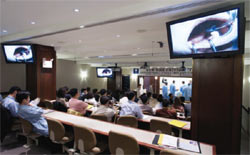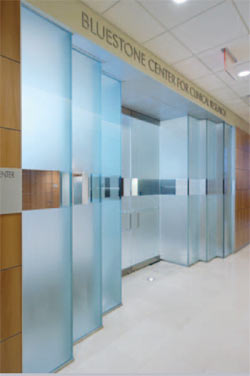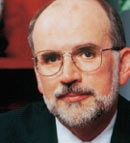New York University College of Dentistry
New York City, New York
Interviewee:
Michael C. Alfano, DMD, PhD
Dean
Question #1
Inside Dentistry (ID): Exciting and innovative new research initiatives are taking place at dental schools nationwide. What is the most significant area of research taking place at your dental school?
Dean Michael Alfano (MA): One component of our research strategy is translational research. We firmly believe that in today’s market, groups of researchers must work together synergistically in order to move fundamental basic science research into practice. Accordingly, this integrated approach drives the majority of the research conducted today at the NYU College of Dentistry.
In oral cancer research, for example, 1 faculty member is making dramatic progress toward revealing novel targets in programmed cell death. Other faculty members are involved in research on cancer’s early stages, and we recently recruited an immunotherapy expert who is assessing whether or not injecting a time-release interleukin formulation into a tumor leads to a more evenly distributed and sustained immune response. At the same time, the NYU Oral Cancer Disparities Research Center (OCDRC) is working to identify factors contributing to oral cancer disparities, as well as to develop and test new strategies for eliminating them. By sharing their expertise, NYU oral cancer researchers are contributing to a broader understanding of cancer’s progression and to the development of highly targeted prevention and treatment strategies.
A philosophy of collaboration and interaction also drives a new National Institutes of Health (NIH)-funded initiative, a Practice-Based Research Network (PBRN) known as the NYU PEARL (Practitioners Engaged in Applied Research and Learning) Network, which enables faculty and private practitioners to collaborate on studies addressing key patient care problems routinely encountered by dentists in private practice.
Other NYU research priorities include biomimetics and tissue engineering, improved dental implants, infectious diseases, and catastrophe preparedness. For example, basic and clinical scientists are working together to extend the life of ceramic crowns; 1 faculty member recently received FDA-approval for the first bioengineered implant; other faculty are demonstrating the relationship between oral and systemic diseases and their therapies; a senior scientist is conducting research that may contribute to the development of new anti-HIV drugs; and our faculty are actively involved in initiating and conducting research sponsored by the university-wide NYU Center for Catastrophe Preparedness and Response.
Question #2
ID: What endeavors have been most successful for you in terms of securing funding for this type of research, or other types of translational research?
MA: NYU College of Dentistry has been quite successful in attracting federal funding for collaborative research. The PEARL Network, which was funded with a $26.7 million grant from the National Institute of Dental and Craniofacial Research (NIDCR), is 1 example. In fact, it marks the first time that the NIH has allocated funding for clinical research that directly involves dental practitioners, in collaboration with faculty researchers, from study concept initiation through implementation. NIDCR also provided $8.3 million to establish the NYU OCDRC and $5.9 million for collaborative research designed to extend the life of ceramic crowns. In addition, we have received $2.5 million from the NIH to study the inner workings of cell death, and we share with the NYU Medical Center a $2.7 million Department of Homeland Security Grant to co-develop a Catastrophe Response Plan.
At the state level, NYU last year received a $750,000 award from the New York State Office of Science Technology and Academic Research (NYStar) Faculty Development Program to recruit a researcher who specializes in oral-based diagnostics, which would be used to detect multiple oral pathogens, including HIV and bioterror agents.
Question #3
ID: The demographics of dental schools overall—in terms of faculty composition and the student population—are changing. What changes have you seen at your dental school in particular?
MA: An especially important challenge is the need to increase the number of underrepresented young people pursuing careers in dentistry. At NYU, we have mounted an aggressive effort to make the student body, and therefore the profession, more diverse. While we still have a long way to go, the fact that the 1999 entering class had only 1 African-American student, while the 2005 entering class has 12 African-Americans, tells us that we are moving in the right direction.
In terms of faculty composition, we have recruited approximately 110 full-time equivalent (FTE) faculty since I joined NYU in 1998 while reducing our student population. Eighty-five of the new faculty members are full-time and include many nationally and internationally known scholars. Together with our outstanding existing faculty, the new recruits have made extraordinary contributions to enhancing the quality of our education program. We are also actively recruiting international faculty members who teach at NYU as visiting professors.
Question #4
ID: How has your dental school responded to these changes, and what have the reactions been from students, faculty, and administrators?
MA: Overall, the reactions to these changes have been extremely positive. For example, students love the fact that more faculty are available to teach and mentor them. Indeed, we have established a very successful mentoring program with faculty volunteers offering individual recognition and encouragement, honest criticism and informal feedback and counseling, and assisting students with long-term career planning. Like the city of which we are a part, NYU College of Dentistry is very good at evolving, adapting, and changing to address new needs.
Question #5
ID: There are many challenges and opportunities when it comes to oral healthcare. What do you see as the most urgent need, and how does your dental school differentiate itself in efforts to respond to those challenges and opportunities?
MA: A major challenge for our nation is access to affordable, quality oral healthcare. In fact, a feature article by the celebrated author Malcolm Gladwell in a recent issue of The New Yorker magazine discussed the consequences of untreated oral disease among Americans who could not afford dental care. He noted that almost every time they asked interviewees what their first priority would be if the President established universal healthcare tomorrow, the immediate answer was “my teeth.”
At NYU, we care for the largest, most diverse dental patient population in the United States, many of whom are the working poor, have no insurance, or are ineligible for Medicaid. As a consequence, we provide over $30 million in uncompensated care annually. This is a staggering burden, but the alternative is that many patients would have no access to dental services.
Children are a special concern. To address the dental needs of children living in underserved areas throughout New York City, the NYU College of Dentistry launched a mobile dental care program called “Smiling Faces, Going Places” in 2000. Each day the van travels to a school to provide comprehensive pediatric dental care. The program is so successful and the demand for the van’s services so great, that 2 years ago we introduced an evening component. City and State legislators have been very generous in providing support for the program.
A significant way in which NYU differentiates itself is through its ability to leverage its location in the media capital of the world in support of such programs as oral cancer awareness, prevention, and early detection; the links between systemic and oral health; and access to preventive care for youngsters through our mobile dental care program and programs such as the American Dental Association’s “Give Kids A Smile.”
Question #6
ID: Is there anything else you would like readers to know about your dental school, or that you would like to comment on in general?
MA: NYU College of Dentistry’s vision is to become the dental institution in the world with the greatest impact on the health of society. So we will continue to improve our faculty, curriculum, and clinical services utilizing novel and creative healthcare delivery services; to further strengthen our research enterprise; to deepen our service commitment and outreach; and to partner with other institutions both in the U.S. and overseas.
As part of our plan to achieve these goals, we recently formed an alliance with the NYU nursing program, which has moved to the College of Dentistry and has become a College of Nursing within the College of Dentistry. Both the dentistry and nursing programs will continue to pursue robust independent academic agendas that fully maintain their accreditation status, while also taking advantage of opportunities to seek new synergies through interdisciplinary health research and education, in order to further improve healthcare in America.
Another exciting path we are pursuing is the total revision of our curriculum by integrating implant education into the full 4 years of the dental education program. We are doing this to ensure that every NYU dental graduate is competent to restore both a partially and a completely edentulous patient using single-tooth implants and implant overdentures, respectively. The revised curriculum is supported in part by a multimillion dollar gift from Nobel Biocare USA. Similarly, we have introduced major enhancements in teaching our pre-doctoral students about business through a partnership with Levin Group, and in teaching them orthodontics with the assistance of Align Technology, Inc.
Finally, I’d like to say an additional word about the PEARL Network. This initiative offers an unprecedented opportunity for private practitioners to work in collaboration with faculty to transform dentistry into a more scientifically-based discipline, with greater benefits for patients, society, and private practitioners. I invite practicing dentists to consider becoming PEARL practitioners and help to ensure that the Network fulfills its potential and reaches its goal. I hope that practitioners will visit the PEARL Network Website at www.pearlnetwork.org.
 |
 |
|
| The Rosenthal Institute for Aesthetic Dentistry at NYU College of Dentistry features a 52-seat amphitheater with global videoconferencing reach. | The NYU Bluestone Center for Clinical Research is an 8,500 square foot facility dedicated entirely to the development, implementation, performance, and analysis of clinical research.With 8 beds, the Center boasts the only overnight clinical research facilities in a dental school in the nation. | |
 Michael C. Alfano, DMD, PhD Michael C. Alfano, DMD, PhDDean, New York University College of Dentistry New York City, New York |
||



